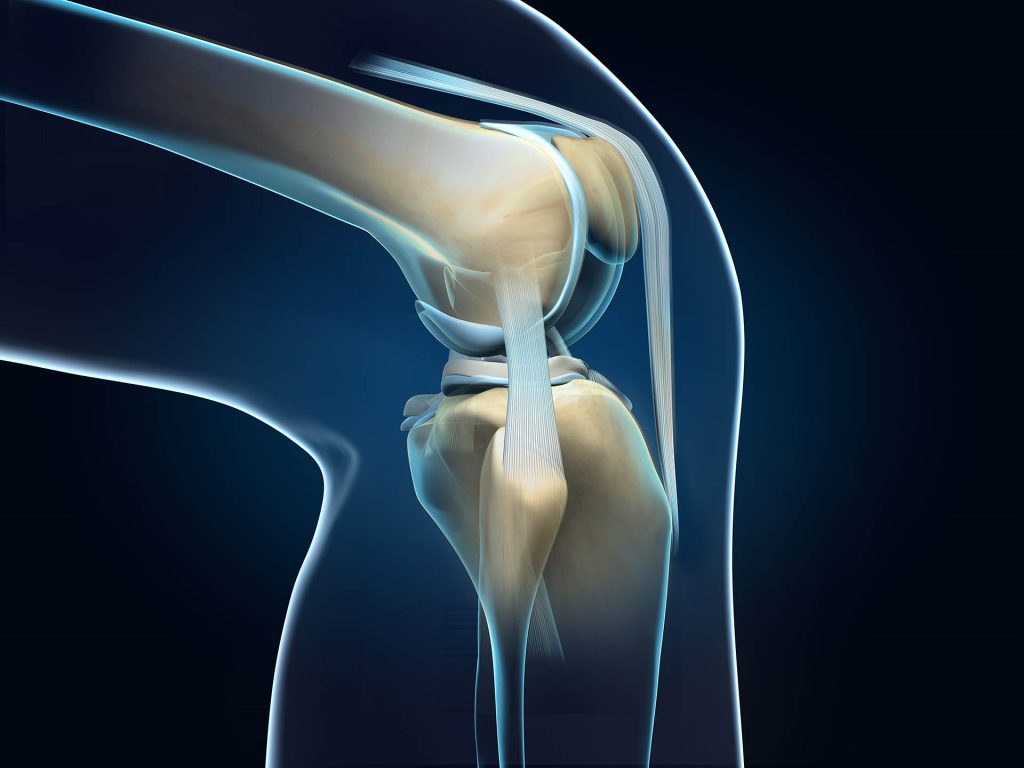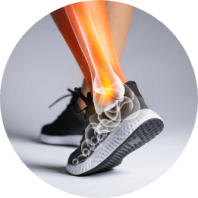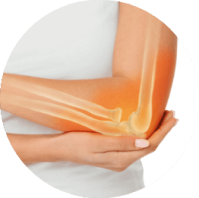Meniscus Injury
A sudden sports mishap or the gradual wear and tear of your knees can result in a meniscus injury. A torn meniscus is a painful condition that limits your range of motion and disrupts your everyday activities.
Causes of meniscus tears
A meniscus tear can happen due to various reasons.
Sudden movement
Lifting, twisting or rotating of the knee from sports or other activities.
Degeneration
Gradual wear and tear over time, common in ageing individuals.

What is a meniscus injury?
The meniscus is a crescent-shaped cartilage in the knee joint. It acts as a cushion and stabiliser, aiding in weight distribution and the smooth movement of your knees. A tear in this crucial part of your knee will lead to pain and limitations in your movement.
Symptoms of meniscus tear
- Pain: Often felt along the joint line of the knee.
- Swelling: Immediate swelling or delayed swelling after an injury.
- Clicking or popping: Audible sounds during movement.
- Limited range of motion: Difficulty fully extending or
bending the knee.


Risk factors for a meniscus tear
- Age: Age plays a role as the meniscus weakens and becomes more prone to tears as you age.
- Sports: Sports that involve aggressive twisting, pivoting, or sudden stops and starts can also contribute.
- Obesity: Extra weight stresses the knee, making it weaker and more vulnerable to injury.
- Previous knee injuries: Previous trauma to the knee may
weaken the meniscus.
Non-surgical meniscus tear treatment options
Meniscus injuries can be treated without surgery if the tear is small and does not cause significant symptoms.
- Physical therapy: Strengthening exercises to improve knee stability.
- Anti-inflammatory medications: Medications to alleviate pain and inflammation.
The success of non-surgical meniscus tear treatment depends on factors such as the size and location of the tear, as well as individual factors like age and activity level.
Meniscus tear surgery
When conservative methods prove insufficient, a meniscus tear surgery, known as arthroscopy, may be considered. Arthroscopic surgery is a minimally invasive treatment to repair or remove the torn meniscus. The procedure is performed in the following order.

Arthroscopy
Small incisions are made to insert a tiny camera (arthroscope) into the knee. The camera inside the knee allows the surgeon to visualise the inside of the joint.

Repair or removal
Depending on the type, size, and location of the tear, the surgeon may either repair the torn meniscus by stitching the edges together or trim away the damaged part (partial meniscectomy).

Recovery
After surgery, a period of rehabilitation and physical therapy is necessary to regain strength, flexibility, and function in the knee.
Surgery is often recommended for larger tears, tears in certain areas of the meniscus with poor blood supply, or when conservative treatments have not been successful. The specific approach depends on the individual case and the surgeon’s assessment.
When to see a doctor for meniscus injury
Seek a doctor when you experience pain, swelling, and difficulty moving your knee.
While not every meniscus injury requires immediate medical attention, seeing a doctor for a proper diagnosis and treatment plan is advisable. A doctor can perform a physical examination, may order imaging tests like an MRI, and provide guidance on the most appropriate course of action.
Even if the injury seems minor, seeking medical advice can help prevent potential complications and ensure that you receive the proper treatment, whether it’s non-surgical methods or, in some cases, surgery.
How a meniscus tear is diagnosed
A doctor will typically diagnose a meniscus tear using the following methods.
- Medical history: Your doctor will note your symptoms when they started and if there was any specific injury or activity that preceded the pain.
- Physical examination: The doctor will physically check for tenderness, swelling, and range of motion.
- Imaging tests: While not always necessary, imaging tests like MRI (Magnetic Resonance Imaging) can provide detailed images of the knee’s soft tissues, helping to confirm the diagnosis and extent of the tear.
In some cases, X-rays may be done to rule out other potential causes of knee pain, such as fractures or arthritis.
Be open and honest with your doctor about your symptoms and potential causes. Your doctor will outline an appropriate treatment plan tailored to you based on the assessment.

Meniscus injury treatment in Singapore
A meniscus injury is a painful and debilitating condition that can put a stop to the activities you enjoy. Fortunately, seeking treatment can put you well on your way to recovery.
Cove Orthopaedic Clinic in Singapore offers comprehensive meniscus injury care, including advanced diagnostics, personalised treatment plans, and surgical interventions when necessary.
Book a consultation with our meniscus tear specialist to learn more about the treatment options and cost.
Frequently Asked Questions
Minor tears may heal with conservative measures, but more severe cases often require intervention.
Walking is possible, but you must be careful to avoid exacerbating the injury. We strongly recommend you consult a doctor for guidance.
Untreated meniscus tears may lead to chronic pain, joint instability, and increased risk of osteoarthritis.
Recovery times vary, but patients typically return to normal activities within a few weeks to a few months post-surgery. Physical therapy is essential to the rehabilitation process.
Conditions We Treat








